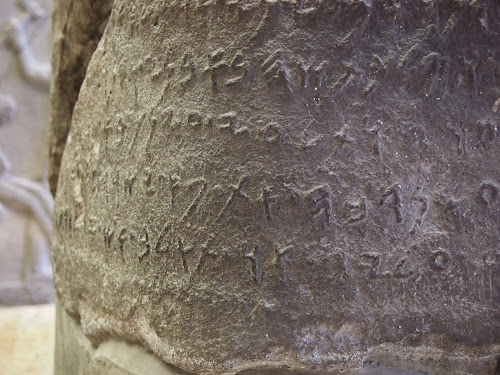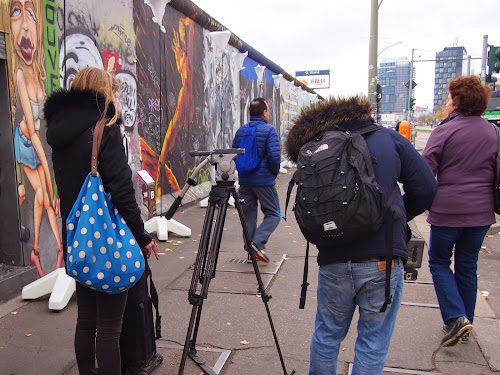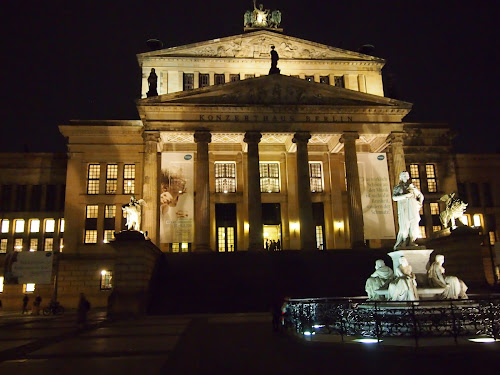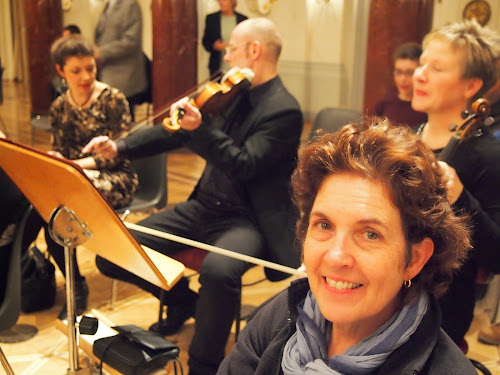A whole area of the Pergamon Museum was just closed – until 2019 – the area housing the famous Pergamon Altar, for which the museum is named. Thank goodness! Otherwise, we’d really be suffering from museum overload. There was enough jaw-dropping material remaining to keep us fully engaged. We’ve included a scant sampling with no real detail (because we’re not taking notes, sorry!).
For a change of pace, we visited the East Side Gallery, an area of the Berlin Wall covered with street art. “The Kiss” between Gorbachev and Honecker is a classic. It was a little more difficult making the trip to see this than expected because one of the train systems was closed due to a strike. Oh, well.
(Full room)
After dinner we walked over to the Konzerthaus to hear Ivan Fischer conducting the Konzerthausorchester Berlin in Schubert’s “Great” Symphony in C Major. Much to our surprise, this was a symphony in the round with audience members interspersed among the orchestra on the floor of the hall. We spoke with the violinist behind us and learned that this was, in fact, the first time they had ever done such a thing. Everyone seemed to enjoy it. We certainly did, although – as one might expect – the balance of instruments was tilted towards whoever sat closest to you. We got a lot of double bass and first violin. Of course, the antiphonal effect was amazing. Fischer gave a talk before each movement and responded to comments on social media at the conclusion. This was all lost on us since it was in German. Directly in front of us, in the press section, a woman was doing what – for want of a better term – we’d call automatic drawing. She had large sheets of paper on her lap and moved a pencil around the paper in response to the music. At times it was as if she were frenetically bowing a phantom instrument. Unfortunately, she didn’t know the score and would get caught up in something that didn’t shift in time with the music. A strange phenomenon to add to our entertainment. All in all, a lot of fun.

















